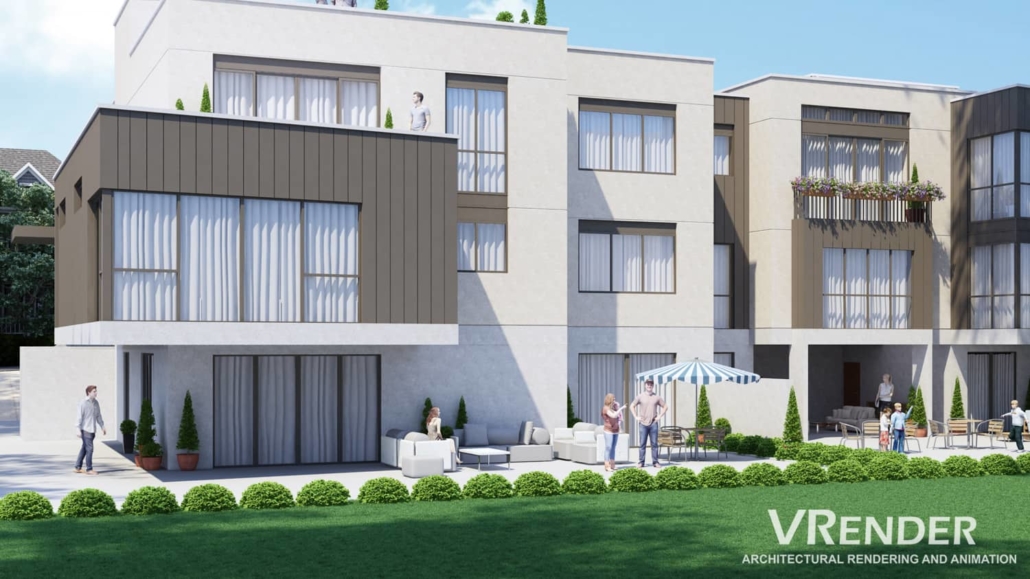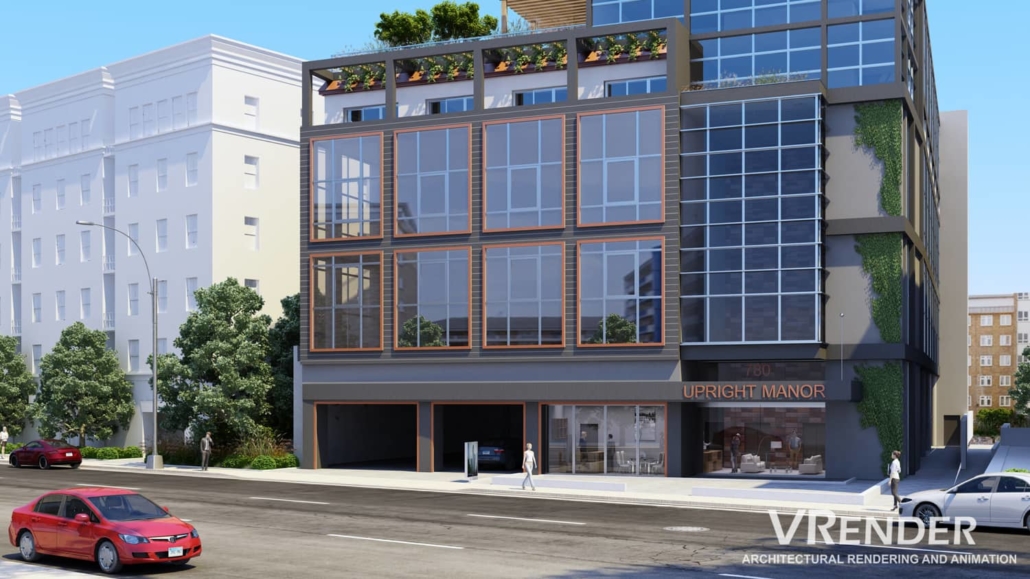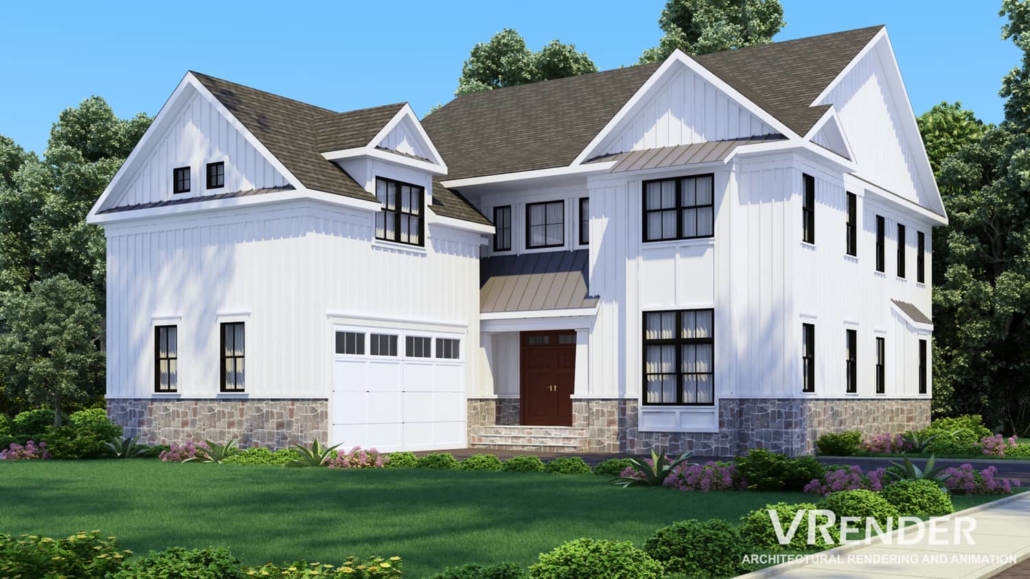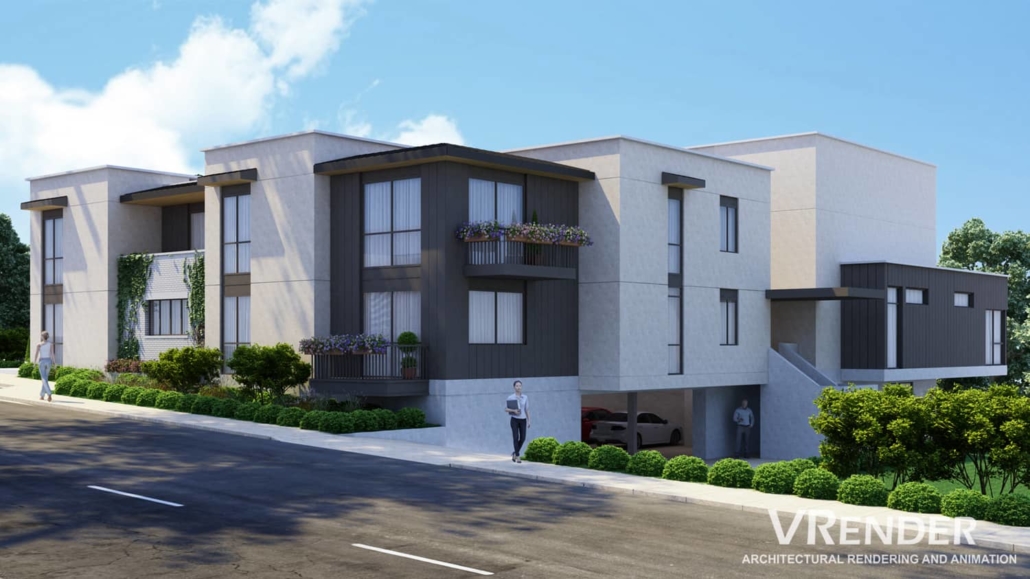The relevance of 3D rendering in exterior architecture design
The relevance of 3D rendering to any architecture project is irreplaceable. If you check, nothing beats being able to visualize a project even before it has been built in reality or spot problems or issues and fix them in the design phase, averting their occurrence in reality. How about its usefulness in marketing and advertising? It serves as a medium of communication between client and architect in the most straightforward language that both parties can understand.
This article explains in great detail its relevance to architecture.
Sneak-peak into the project in real-time
With the aid of rendering software, it is possible to view a project as if it has already been built, recreating the surroundings and other outdoor elements precisely as it will be in real life. The help of high-definition textures, light effects, color, and other features produces a hyper-realistic image of the project, making it easy to relate with and understand. This makes it very easy for clients to be enticed and attracted to the designs and make purchases because they can see the final output. You will get an image of the project from one view and in multiple views, walkthrough, etc.
Reveals design problems
Sometimes, a paper on paper may seem perfect and flawless but may have some issues that may only be seen when built. 3D rendering takes away that factor as it minimizes such occurrences. It reveals problems that a 2D drawing will never tell. A typical example will be the famous walkie-talkie building in London.
The skyscraper’s unique shape makes it one of the most famous landmarks in the city, but the architect didn’t think about the changing seasons. Its curved shape doesn’t cause any problems most of the time, but the towering side reflects the sun down to the streets for three weeks. That raises the street temperature so much, car tires deflate, plastic parts melt, and people can cook eggs on the concrete.
3D rendering will save the cost of identifying the problems after it has been built and trying to correct it. It ensures the best possible design before construction takes place.
Easier Presentations
3D rendering is a communication tool. They are to present what visual aids are to the classroom. They guarantee effective visualization of the project to investors, clients, etc. 3D rendering helps to show the world the image in the designer’s mind in great detail, much better than drawings and models, especially for designs that are not conventional and difficult to imagine. 3D rendering is the medium we can use to see the future because they look like real pictures. It’s a fantastic tool to blow the mind of the investors and sell designs with ease.
Affordability
Before now, in the absence of 3D rendering, architects had to re-design projects by hand when corrections were made to the initial design. It takes about the same time it takes to complete the initial design, and of course, the costs involved were doubled. 3D rendering is a cost-effective way of designing because it allows for almost instantaneous upgrades at practically no cost or even upgrading the buildings in reality.
Marketing prowess
Marketing is a big deal to any business or industry, including the architecture industry, and nothing comes close to closing a deal like 3D rendering. In today’s business world, where everyone is looking for a competitive advantage, 3D rendering proves to be effective when used as an advantage over one’s competition. Your renders have the power to attract the right people depending on the amount of effort you put into it and what you want to achieve. People are attracted to your work based on two significant factors; ability to pay attention to details and what your style represents. With this, you can build a reputation for yourself and attract the crowd that you desire. It is the easiest way to promote a new design or project or even yourself as an architect.
Ease of access to creative juice
Visualizing your design during the design process is a sure way to open your mind up to new ideas and innovations. It will bring you to notice things that you did not initially see or intend, giving you multiple views of the design in progress. Corrections and modifications can be made on the go, and clients can also visualize the project and make inputs. It is so unique that you don’t even have to start over to make these modifications in making changes.
Architects can visualize how the exterior relates to the landscape and surrounding elements
For a 3D exterior render, the building only makes up one part, and the surroundings make up the other part. Otherwise, the building will exist in isolation. 3D rendering allows you to take a few photos of the surrounding area and implement the renders in realistic settings. This is one of the most useful attributes of 3D rendering. 3D rendering takes out trying to create visual images in the mind of what should be and what shouldn’t be and allows everyone to see what the building or design will look like.
Better understanding by building team.
The entire building, including the engineers, surveyors, designers, software professionals, and the client, needs to maintain a good understanding of the project among themselves. The 3D render serves as a language where everyone understands, thus enhancing communication and knowledge in the building team. This also speeds up the design process when everyone is working in sync and at the same pace.
They leverage on the Emotions of Clients
3D renders can look 100% real if done correctly, allowing the architect to evoke emotions from the client or everyone who sees them. Every person likes to appreciate anything aesthetically pleasing, and 3D rendering helps designers leverage this appeal to beautiful things. Nothing can bring an investor closer to a project than a 3D render as they have a lived-in experience of the building or design.
Conclusion
From all angles, the relevance of 3D rendering has been proven without any doubt as a game-changer in the world of architecture. It has simplified the design process from drawing with large sheets by hand to designing small and big scale projects using rendering soft-wares and producing realistic visualizations of the project to be appreciated by everyone.
- Types and Advantages of 3D Rendering Services - October 17, 2021
- What is 3D Rendering: Techniques and Processes - August 26, 2021
- What you need to know about 3D Building Rendering - August 21, 2021











